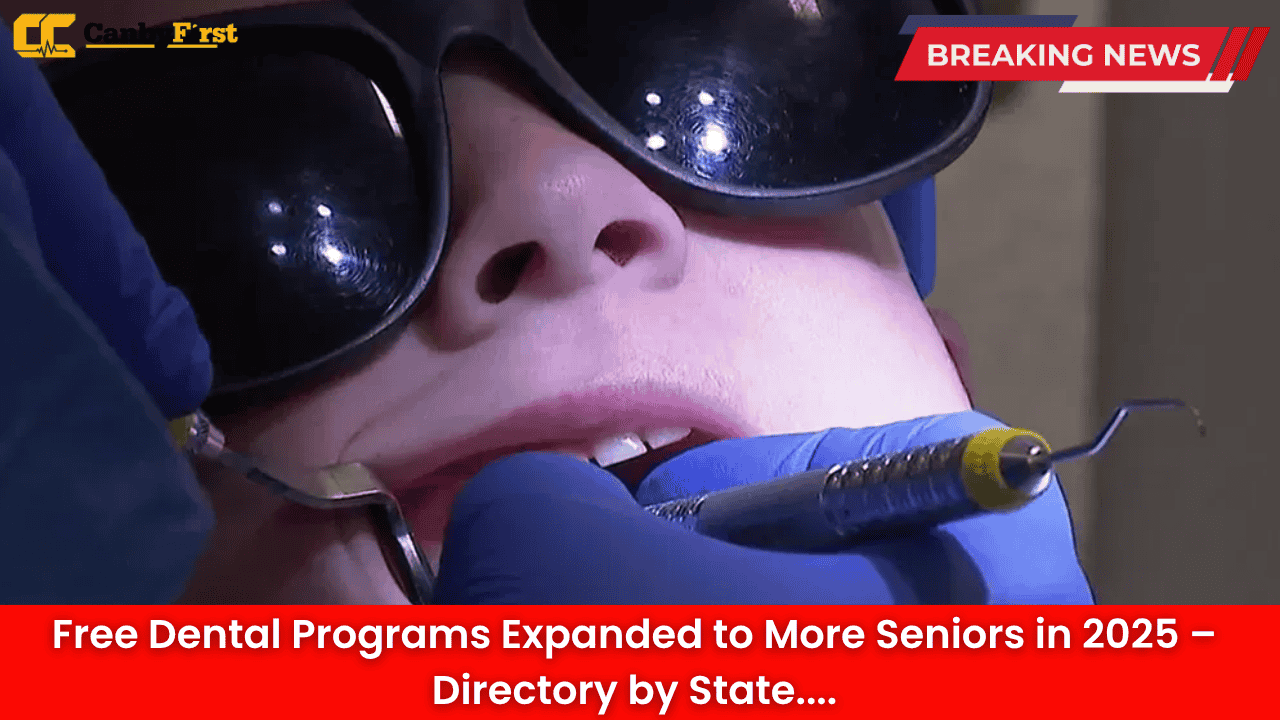Access to affordable dental care has long been a major concern for millions of older Americans, but in 2025, that picture is changing dramatically. A nationwide effort to expand free and low-cost dental programs for seniors has gained momentum, and many states are rolling out new initiatives to make oral health accessible to more people over the age of 60.
A Milestone in Senior Health
The expansion is part of a broader healthcare push that recognizes dental care as critical to overall well-being. Untreated dental conditions can lead to infections, heart disease, and complications with chronic illnesses like diabetes. Yet, until now, many older residents—especially those living on fixed incomes—found preventive and treatment options out of reach.
In 2025, states are addressing this gap by unveiling dental benefit programs that either fully cover or significantly reduce the cost of check-ups, cleanings, fillings, dentures, and even emergency procedures for seniors.
Also Read
Why Now?
Several factors have driven these changes. First, a growing aging population has placed more pressure on public health agencies. By 2030, one in five Americans will be 65 or older. Second, advocates and dental associations have highlighted the economic burden seniors face with oral health costs. Finally, bipartisan support in several legislatures has resulted in funding for dental initiatives within Medicaid expansions and state-funded senior health programs.
How States Differ in Coverage
Not every state offers the same level of support, but nearly all are now participating in some form of dental assistance program for seniors. While some offer comprehensive coverage, others focus on preventive or emergency care for specific income groups.
Here is a look at the 2025 state directory of free or expanded senior dental care:
State-by-State Directory
-
California: New 2025 program offers full coverage for preventive, restorative, and emergency care to seniors earning below 200% of the federal poverty line. Mobile dental units will also serve rural areas.
-
New York: Expanded Medicaid coverage now includes partial dentures and root canal treatments for seniors. Community clinics offer free annual checkups for older adults over 65.
-
Texas: Seniors aged 70 and above with low income now qualify for free preventive services, including cleanings and x-rays, at participating dental colleges and clinics.
-
Florida: Community health programs expanded to provide seniors 60+ with free preventive care and emergency dental support. The state also funds annual dental health fairs for seniors.
-
Illinois: New statewide coverage allows retired residents on fixed income to receive basic restorative services like fillings and extractions at no cost.
-
Ohio: Low-income seniors qualify for expanded Medicaid dental care, with annual coverage limits raised. Free transportation is included for dental visits in some counties.
-
Georgia: Rural-focused initiatives provide seniors free dental screenings, cleanings, and dentures through local health departments.
-
Michigan: Medicaid dental benefits extended to cover dentures and oral surgery for seniors, a first for the state.
-
Washington: All seniors 65+ can access annual free dental exams and discounted procedures at participating nonprofits and state clinics.
-
Pennsylvania: Mobile clinics introduced in 2025 visit nursing homes and community centers to provide basic and emergency dental care, fully funded by the state.
The Impact on Seniors
For many older adults, the expansion goes beyond just oral health. Researchers note that improved dental programs can help reduce hospital visits caused by untreated infections and improve nutrition in seniors who struggle to eat without proper teeth or dentures.
In states like California and Michigan, seniors have already reported that access to free or low-cost dentures has restored their quality of life. Others highlight the dignity and confidence that comes with being able to smile again without discomfort or shame.
Challenges Still Ahead
Despite the expansion, challenges remain. Some states only partly cover senior dental needs, leaving gaps for complex treatments like implants. Rural seniors still face issues with transportation to clinics. Additionally, dentist shortages in some states may slow down access despite funding being available.
Health advocates are calling for the program to be standardized nationwide, so seniors have equal coverage regardless of where they live. For now, local partnerships with nonprofits, universities, and mobile health units are helping bridge the gap.
The Bigger Picture
The 2025 expansion of senior dental care is seen as a landmark achievement in public health. It reflects a growing recognition that dental care is not a luxury, but an essential component of aging with dignity and health.
As more states explore new ways to improve access, the hope is that no senior will have to choose between paying utility bills and getting a painful tooth extracted.
FAQs
Q1: Who qualifies for free senior dental programs in 2025?
Eligibility varies by state but generally includes seniors aged 60 or 65 and above, often with income requirements tied to federal poverty levels.
Q2: What services are usually covered?
Most states provide preventive care like cleanings and exams. Some also offer fillings, dentures, extractions, and emergency care.
Q3: Do all states now provide free dental care for seniors?
Not all states provide full coverage, but nearly all have at least partial or expanded dental services available to seniors.
Q4: How can seniors access these programs?
Seniors can typically apply through local health departments, Medicaid offices, community clinics, or senior health centers.
Q5: Will these expansions continue beyond 2025?
Advocates expect programs to grow as demand rises, though future expansions will depend on state budgets and federal support.












